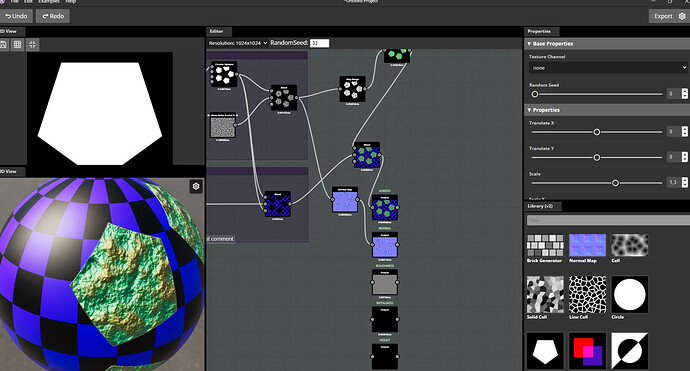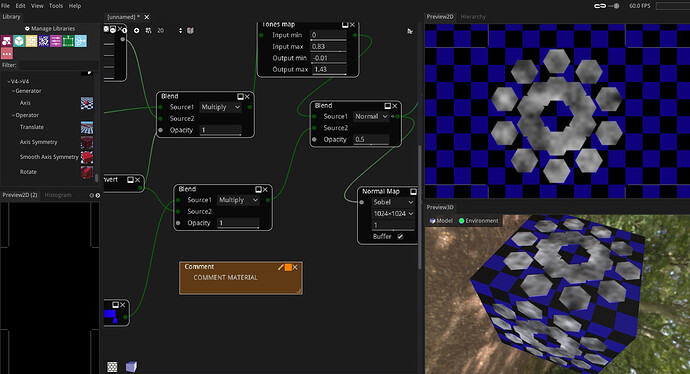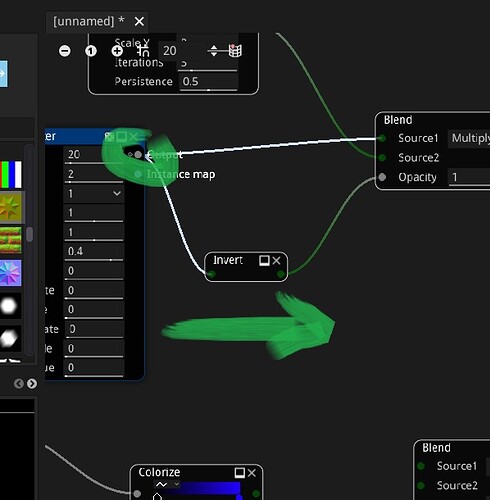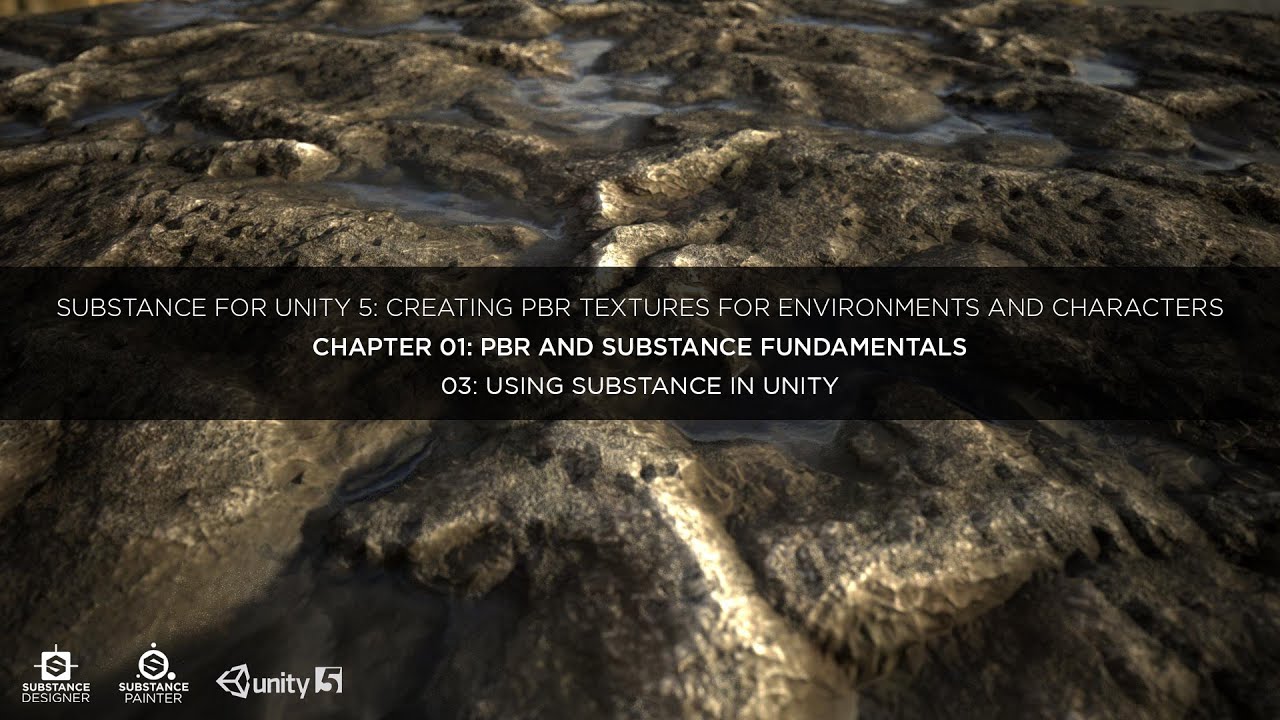It looks like a cheap geonodes knockoff 
Just kidding, some competition is good. The modeler looks more impressive than their procgen tool to be honest.
Yeah, I admit, I am parroting somebody who has done it. I myself haven’t done it (yet) because I would have to buy a second GPU. I don’t have a CPU with an onboard GPU (which would be an option).
AFAIK it is not THAT difficult, even Nvidia has removed its virtualization limitation for Gaming GPU’s. In the past they only allowed it with their Quadro cards, but this limitation was something one could circumvent with a little-bit of hacking.
I am curious, did you tried it and failed, or did you not even attempt it (just like me)? ![]()
The only reason I learned to use Linux was the thought to be able some day to have a hybrid PC that unites the advantages of Linux and Windows with no downsides of either.
Dual-boot is nice, but I am actually too lazy for the double effort of taking care of 2 separate operating systems and the constant switching was going on my nerves so I am back (fully) on windows.
CentOS dying a slow and unnecessary death and being reborn as (useless) rolling release was the death-knell of my career as permanent Linux user (still use it on my Laptop though.)
On a sidenote, over the Holidays I played around with the Laptop of my Mom in an attempt to kill some time and to stress-test her new machine, so I tested 3D Coat Textura and ArmorPaint, trying to get some simple 3D model painted, but I have to admit I failed spectacularly with both.
Maybe it was the alcohol in my blood or my family being loud around me, my brain couldn’t take it in…I gave up frustrated.
Seems like I am lost without Substance Painter - I fear I am not gonna get away from their tools anytime soon. Not only did I fail, parts of me refuse to learn something new (I am getting old?).
Also, never change a running system…
Still not liking Adobe and Substance being part of it, but I give them some slack as long as they sell perma-licenses, even if its over steam.
It was a pretty half-assed attempt, admittedly, but I did try it.
I don’t know if things have improved over the last couple of years since I last gave it a try, but it’s a very, very busywork intensive process, requiring you to spend at least a good half hour banging out bash commands, and tweaking various config files.
Considering my command line skillz are fairly weak, and I wasn’t sure if the results I’d get would be worth the effort, I bailed on it halfway through.
While Blender Geo nodes is doing great, competition pushes progress, perhaps new ideas or features that could be great and Blender would get.
They are just beginning in Geometry and already able to do great things perhaps lot more easier than Blender on their trailer about buildings variations, this is something i’ll have to test.
For example Substance Designer strength is providing lot more advanced nodes than Blender material nodes, they don’t let you on your own for nodes that should be available out of the box.
Let them some time and they could compete against houdini for procedural geometry, while beeing simpler and as powerfull, it’s too early as they are only starting.
I tend to think this will mostly play out in the ease of use arena. The people at Substance know how important it is that tools are kept user friendly. Blender lacks a couple of fulltime UX designers to get to the same level of polish.
A bit late: ups, i totally overread @Ratchet already mentioning MaterialMaker:
But after re-looking at TextureLab… okay if you prefer the look over applicability… i mean there are missing some essential nodes (like for example edge detect, weave, brick patterns (BasketWeave, HerringBone, SpanishBound), uneven bricks, truchet, fibers, scratches ) in TL and if you wanna develope you own shader (not as noodles/ group of nodes) then you have to program in javascript /Electron …
MM is based on the Godot game engine and you can edit/modify every(!!!) node (code or nodes and store in you library) and even look at the code of you complete node creation with the debug node (shows complete shader code)…
paulofalcao — 18/05/2021
Going to shadertoy copy a texture 3d generator code, and make a new node is very simple
The node library will only grow, and people can make their own libraries
Like mine https://github.com/paulofalcao/MaterialMakerRayMarching
By the way MaterialMaker does have SDF (signed distance function) already implemented as nodes. Oh and dis i mentioned that the transform, rotate (and many other) nodes have not only sliders but GUI-gizmos for easy handleing (especially nice for irregular polygon and curve nodes)? Sometimes the names differ but it also has an alias file…
Sorry if this looks like a rant or offensive. But me with my i3/8GB intel internal graphics only computer love this tool (next to blender).
Maany of those like Brick pattern and others are already availabel in TextureLab.
But i agree MM has lot more nodes like 3D shapes and many other additions.
But TextureLab is progressing also.
Curvature node
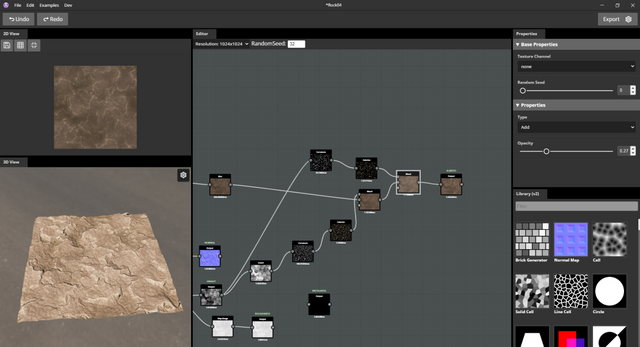
You have already sliders on all nodes, perhaps rotate scale gizmo for 2D shape is missing.
About distance field, i never find a use, perhaps import 3D model and use it as a source node.
Meanwhile i agree Material Maker has lot more nodes.
For presentation and readability, Material Maker should propose the ability to change colors for background and nodes we will be able to get similar look as Substance Designer.
Perhaps because each area stays as a separate app ?
If i remember Substance had both products all in one , Painter and Designer, then they separated both.
More money having those two separate products, but also easier and lighter interface and perhaps easier to understand as each app whole interface is doing only one thing.
Blender could propose aside of Blender main app, the same separate apps system.
A modeler and animation version, an app only doing sculpting and modeling, a geometry nodes and material node app only.
Perhaps that would simplify interface proposing less options and stay focus in one area.
It would not be heavy work , just propose a subset Blender features for each app made on building process, i don’t mean rework all like Blender for artists, just propose Blender subsets as separate apps.
I’m used to Blender a lot, so no difference for me, while when doing modeling and animation for sure i woud just launch some Blender subset modeling and animation app instead.
I don’t have enough experience with these tools to answer this, you’re probably right to an extent. Personally I would think it’s mostly a matter of providing convenience tools/nodes such as gizmos or all-in-one ubernodes. I think having all-in-one is actually a strength of Blender. Look at Lightwave and its two executables… I don’t think many people ever praised that approach (I could be wrong, but I’ve only ever seen criticism over this).
If you feel better splitting the program into “tasks”, that’s what the workspaces are meant for I believe.
I haven’t had a go at texturelab or materialmaker for an entire year, I should fire them up and see what’s new. I’m going to have many texturing needs in the short term, hopefully these two fit the job
Both work great, MM has lot more nodes and some node like radial spaltter has perhaps more options. Let TextureLab time to grow ![]()
I still prefer working in TextureLab about readability and nodes output and input selection works lot better when zooming out.
Depending on needs, for sure TextureLab can not be enough complete.
Same material in MM (would need users to be able to change theme colors for nodes , background, panels)
Issues in MM when zooming a little out, is pins outputs and inputs selection does not respond to connect them instead it selects the node and moves it.
Perhaps there should be some node inner area and outside area border would only be able to select pins outputs and inputs.
If you honestly prefer the form that is the UI over raw function, then there’s nothing stopping you from using Texture Lab exclusively, heck I have it on my machine as well even though I use Material Maker (because why not, it does not cost anything and it might come in handy at some point).
However, in terms of material authoring, the ability to create a very wide range of textures and material types is key, though Material Maker is also catching up on usability features (such as an undo system and a new system for churning out variations of the previous node’s output).
Anyone can use both depending on features needed, for simple materials TextureLab works great, while for more complex ones Material Maker is the tool (edge detect, slope …).
I’m not stuck with one particular tool, i think it would be strange some people forcing themselves to use exclusively one tool when another would be more appropriate for some of their needs.
Usability for MM, sure, before it would need to fix those nodes selection issues when zooming out a little by adding inner and outer region selection on nodes, also make user able to change nodes and background colors for readability.
Anyway two open source materials is great and better than one only, we don’t specially need some tool having monopole  ( enough commercial tools already having monopole and little challengers )
( enough commercial tools already having monopole and little challengers )
Okay since i was typing this there is a little chit chat… Anyway here is a little info:
(Feel free to support each one man developer crew )
TextureLab:
Free, Cross-Platform, GPU-Accelerated Procedural Texture Generator.
author njbrown (a bit hidden, also referes the Java based NeoEdit) :
…it generates textures, not shaders…
seems to build it’s own (?) node system on
Built Using
MaterialMaker:
Introduction
This is a tool based on Godot Engine that can be used to create textures procedurally and paint 3D models.
Its user interface is based on Godot’s GraphEdit node: textures and brushes are described as interconnected nodes.
In one chapter:
Shader nodes
Most nodes in Material Maker are shader nodes. Their outputs are not defined as images, but as shader programs that calculate … (color,…)
And in a subchapter:
Adding the actual GLSL code…
Textures generation is among my needs for performance, shader making material you’ll loose gpu, it’s choice ready textures using Ram Vs shader material using lot more Gpu.
Anyway both are great node material apps.
AFAIK both use the GPU computing units to do this fast… But in the end both make images by computing with a recipe/program made with nodes (and/or code) in a procedural way so that someone can change something for variations… (you also can make this with geometry nodes in real geometry and render an image of it with ortho camera, but this may be slower…) and after that you can use the image as texture for whatever you want…
So why to separate this so much (i see not so much a vs here)? Both are tools (or possibilities) to achieve your goals. But that’s the point of this discussion: very much users here don’t seem to like the cost/performance ratio of SP and looking for alternatives…
Both do not export to Substance Designer format for use in Unity for example with Substance plugin.
The goal is to get your nodes parameters from Designer exposed into Unity interface so you can change material look and make variation in Unity directly
I remember Unreal demo for Substance designer to compute materials and all textures instead of having textures bitmaps pre computed, generation at game start loading was taking minutes, not acceptable for a game otherwise players just quit.
You have to be carefull with nodes cost when you plan to generate textures at game loading, this is where TextureLabs in that case can be better because it displays nodes milliseconds cost and overall material cost.
My goal was not separate, both are great open source material apps, they are constantly improving and they already do many things like Substance Designer.
But at least you did try. ![]()
After looking into it again recently I came to the conclusion that is has gotten progressively better in the last 4 years since I first researched it.
I can’t tell how much, but I know that there has been various positive developments in regard to hardware and software compatibility.
I am in the same situation (what command line skillz? ![]() ) and I shared this sentiment back then, but I am very optimistic that I could archive it now.
) and I shared this sentiment back then, but I am very optimistic that I could archive it now.
I think I can do it, so I think you can do it too. ![]()
This change for the better was the reason why I brought it up in the conversation in the first place.
